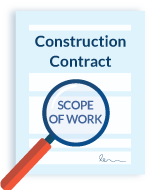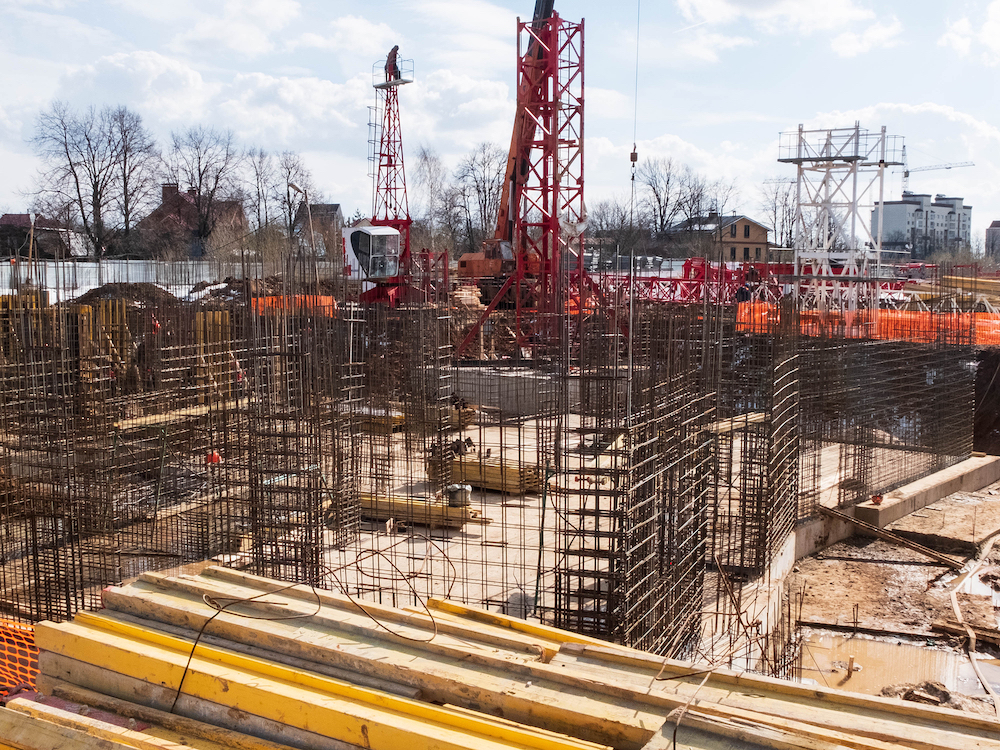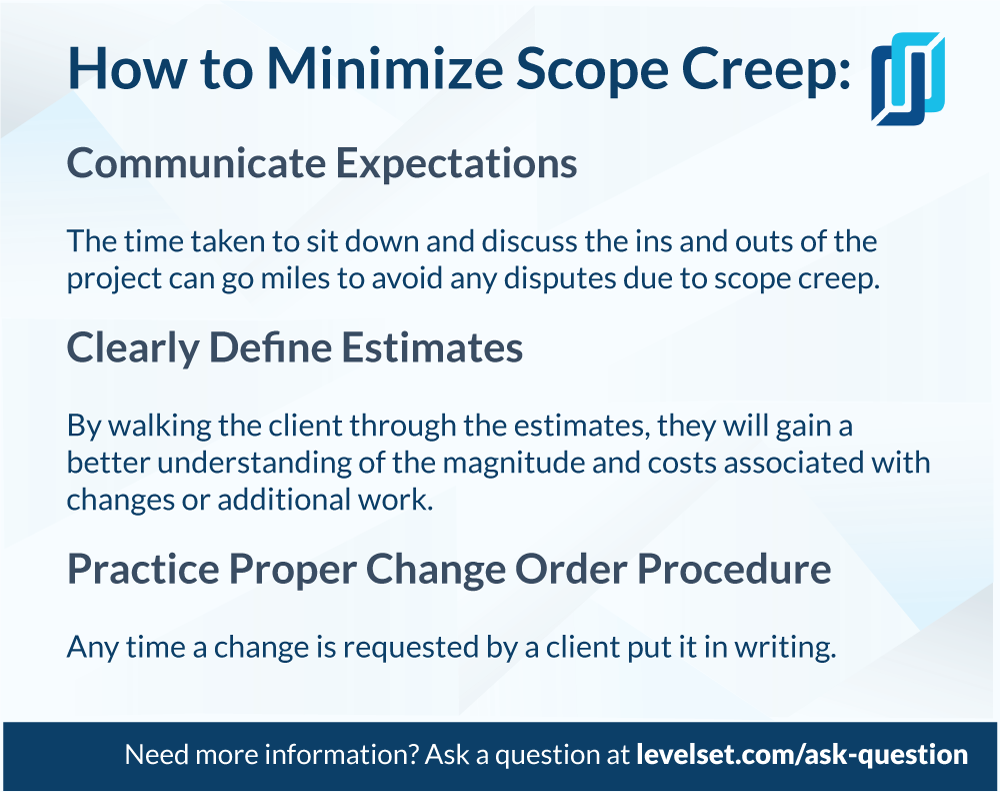
If there’s one truth in the construction industry, it’s this: change is inevitable. However, when changes to the scope of work begin to spiral out of control, the project can face numerous delays and begin to hemorrhage money. This phenomenon is referred to as scope creep.
What is scope creep?

It’s a common problem. Without proper procedures in place, changes might be accepted but undocumented, and that can lead to increased costs and workloads. Unfortunately, many businesses simply write off these extra expenses in an attempt to avoid payment disputes or damaging relationships.
For a deep dive on scope of work:
Main causes of scope creep
Minor tweaks and reasonable changes are to be expected. However, when changes to the scope reach the level of unreasonable or excessive, time and cost overruns get out of hand. The ability to identify the root causes of scope creep is the first step in being able to minimize its harmful effects.
Miscommunication
One of the most significant causes of scope creep is poor communication. Communication is an industry-wide problem, and when expectations aren’t crystal clear for everyone involved, it’s easy for misunderstandings to take place. Without open channels of communication, the scope of the project can become unclear throughout the life of the job.
Improper contract and change management procedures
Scope creep happens all the time due to undocumented verbal agreements. When change orders are approved but left undocumented, this is where the trouble starts. Most payment disputes are over whether a request was actually made, or that the work falls under the original scope of work. But, when proper change order procedure isn’t followed, recovering payment for the extra cost of changes becomes an uphill battle.
Problem clients
Lastly, scope creep may just be caused by the client themselves. It’s extremely common to find yourself with a customer who requests all sorts of changes without ever thinking about what they’ll cost. When the bill comes, they act surprised at all the extras included.
Even worse, there are some clients who will attempt to take advantage of contractors. They’re investing in the construction project and expecting as much return as possible. As a result, some customers may intentionally try to get more work out of the firm for free. Because they’re the one with project funds in hand, problem customers will often try and negotiate or even refuse to pay for extras.
How to minimize scope creep
Scope creep happens on every project, and there’s no way to totally eradicate the problem. But there are ways to minimize it.
Communication of expectations
The time taken to sit down and discuss the ins and outs of the project can go miles to avoid any disputes due to scope creep. Contractors should take the time to fully understand the client’s needs and expectations.
Don’t just ask the what, but also the why. Clients don’t always know what they want or how to achieve the desired end-result. With a clear idea of the why, contractors can then use their expertise to collaborate with the client to help them refine the scope of work before the project begins.
Clearly defined estimates
Another critical step to avoiding scope creep is establishing clearly defined estimates. When a client signs a construction contract, this is merely a legal prerequisite. By walking the client through the estimates, they will gain a better understanding of the magnitude and costs associated with changes or additional work.
Proper change order procedures
Scope changes should be treated almost like separate contracts. Any time a change is requested by a client put it in writing. The order for additional work should be priced out and signed by both parties. Once executed, the change order should become part of the contract.
This may seem like a time-consuming procedure, but it’s absolutely necessary. Once the client is aware of the time and costs associated with change requests, this can act as a deterrent for excessive changes. As we’ve written in many of our articles: Contractors aren’t paid for work performed – they’re paid for the work that is documented.
Bottom line
The best way to control the spread of scope creep is to be proactive. Changes and requests that go outside the project scope, can lead to unforeseen costs, increased disputes, and late project delivery. Clearly defined work scopes, open communication, and proper change control processes can effectively reduce the prevalence of expanded work scopes.
Additional Resources
- Change Directives Can Force Contractors to Make Unwanted Changes
- Using a Work Breakdown Structure Promotes Collaboration and Buy-In


